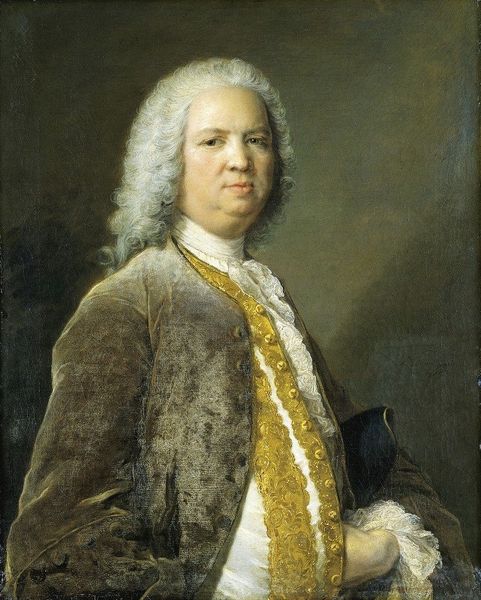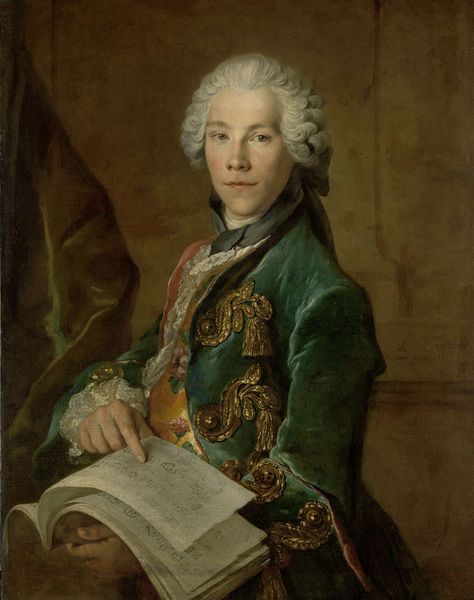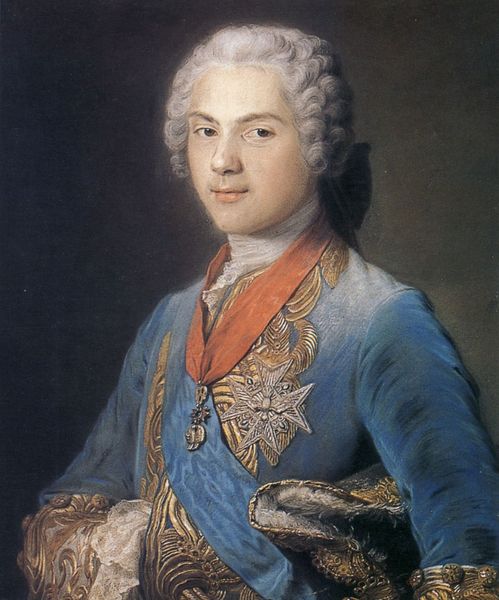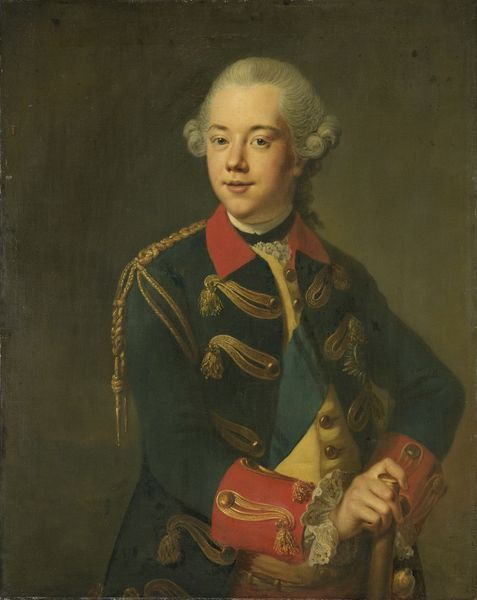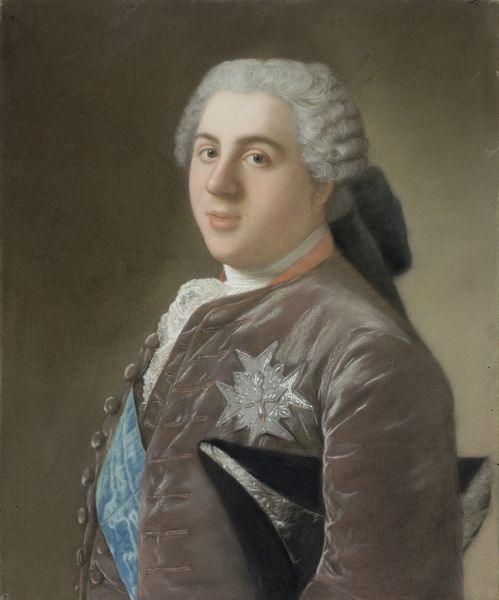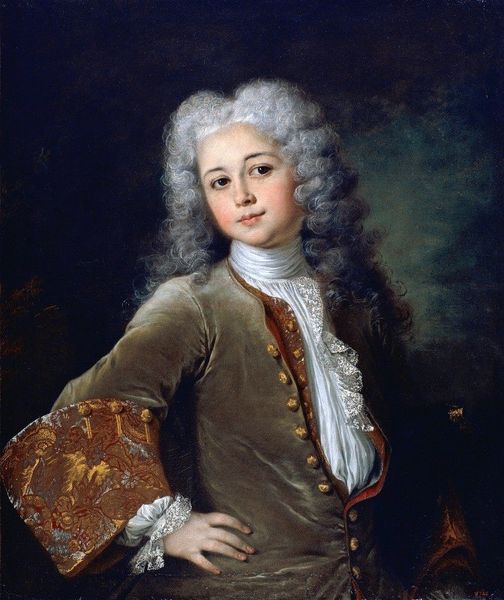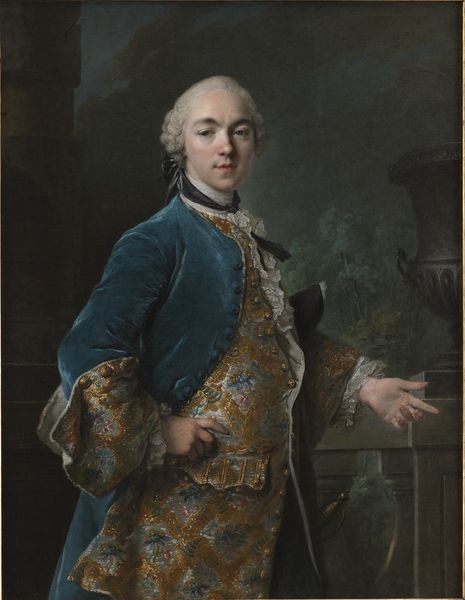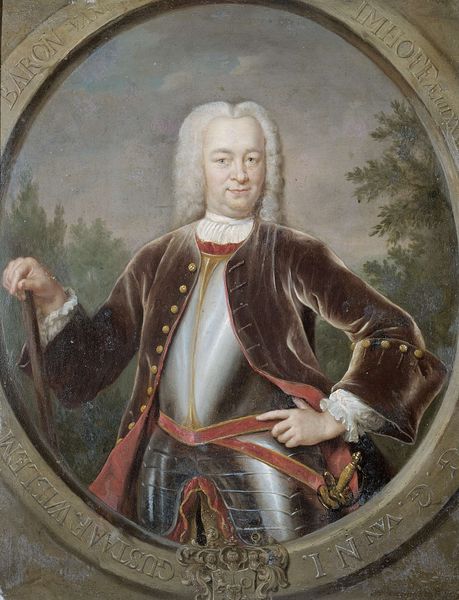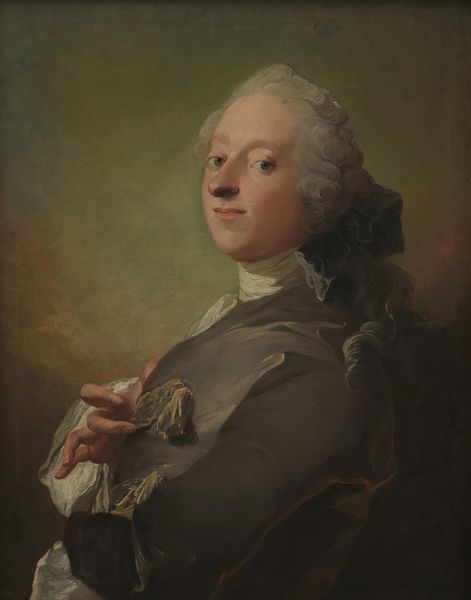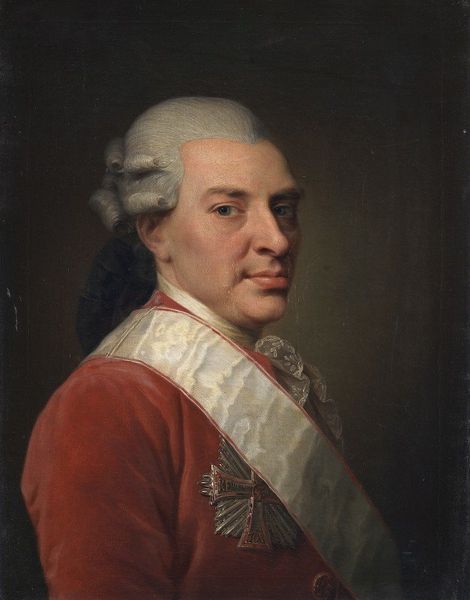
oil-paint
#
portrait
#
baroque
#
oil-paint
#
figuration
#
history-painting
#
academic-art
#
realism
Dimensions: height 92 cm, width 73.5 cm
Copyright: Rijks Museum: Open Domain
Editor: Here we have Louis Tocqué's "Portrait of Isaac van Rijneveld," created in 1738, an oil painting housed in the Rijksmuseum. It's a very formal portrait, but I'm struck by how the subject's gaze seems so direct and knowing. What do you see in this piece, particularly concerning the symbolic choices? Curator: What strikes me is the carefully constructed persona. Look at the architecture fragment. Its presence alludes to wisdom, stability, and a connection to classical ideals, but what about the figure himself? Editor: He looks confident and wealthy, from his clothing and pose. Curator: Precisely. But consider the slight smirk, the hand gesture… These are carefully chosen symbols. It's not merely about wealth but also about intellect and a certain… performative status. The embroidery too, hints at both power and the bloom of wealth and beauty. Is it convincing though, or perhaps masking something else? Editor: Maybe a need to project a certain image, a specific role he wanted to play in society? The column definitely seems to amplify that sense. Curator: Yes, absolutely. Notice also the soft colour palette, perhaps indicative of a specific era’s preference for refined sensibilities. These elements don't just decorate, they communicate deeply ingrained cultural values. Do you find any dissonance between the portrayed image and the symbolic weight of the objects? Editor: The direct gaze and the hint of a smile make him seem almost…modern? As if he knows he's performing. Curator: An astute observation. Perhaps the painting suggests that identity itself is, at times, a carefully constructed performance, relying on recognizable symbols to convey meaning. Something to keep in mind as we interpret images from the past – and even in the present. Editor: It's amazing how much a single portrait can tell us about the values and performance of identity of that time. Curator: Indeed, a deep dive into its symbolic choices reveals a carefully constructed narrative, not just a likeness.
Comments
rijksmuseum about 2 years ago
⋮
Isaac and Arnoldus van Rijneveld worked for their father, a prominent Amsterdam jeweller. They travelled regularly to Paris, the leading European centre for goldsmith’s work. There they had themselves portrayed by Tocqué, an artist who had painted their elder brother in 1737. This pair of likenesses probably dates from the following year.
Join the conversation
Join millions of artists and users on Artera today and experience the ultimate creative platform.
